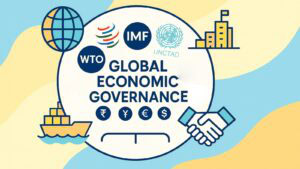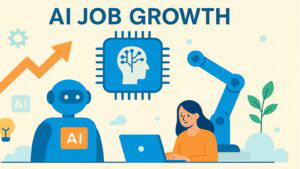Table of Contents
Introduction: The Pulse of Modern Marketing Through Consumer Insights
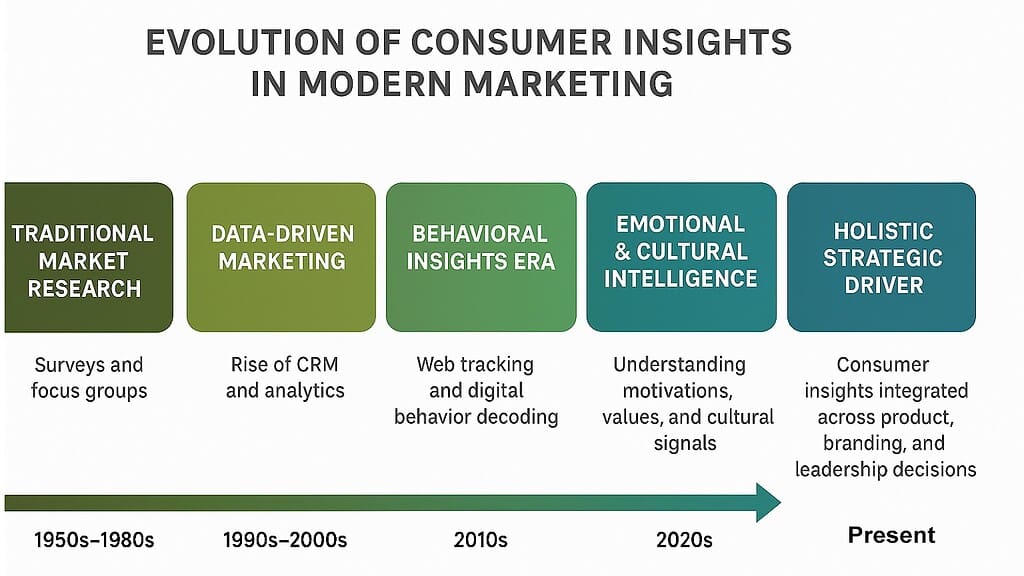
The quiet revolution in boardrooms across the world has nothing to do with artificial intelligence or blockchain technology. It centers on something far more fundamental: understanding why a mother chooses one diaper brand over another, why a teenager scrolls past certain ads but stops for others, why entire communities rally behind brands that seem to speak their language. This understanding, formalized as Consumer Insights, has transformed from a peripheral marketing activity into the strategic backbone of global business success.
Twenty years ago, companies tracked sales figures and called it consumer understanding. They knew what sold and what didn’t, but the why remained opaque. Today’s leading organizations recognize that transactional data tells only half the story. The other half lives in the unspoken motivations, cultural codes, emotional triggers, and behavioral patterns that shape every purchase decision. Consumer Insights as a business function decodes these invisible forces, translating human complexity into actionable business strategy.
Brands no longer compete solely on product features or price points. They compete on relevance, on their ability to anticipate needs before consumers articulate them, on crafting experiences that feel personally designed rather than mass marketed. The companies that master this art share a common trait: they’ve placed Consumer Insights at the center of every major business decision, from product development to market expansion.
This article explores six powerful Consumer Insights that drive the strategies of top global brands. Each represents a different dimension of how understanding human behavior translates into competitive advantage.
Table 1: Consumer Insights Integration Across Marketing Functions
| Marketing Functions | How Consumer Insights Shapes Strategy |
|---|---|
| Market Research | Transforms raw data into behavioral patterns and emotional drivers |
| Brand Management | Reveals what the brand means to people beyond product attributes |
| Product & Service Positioning | Determines which benefits matter most to target audiences |
| Pricing Strategy | Uncovers perceived value and willingness to pay drivers |
| Promotion & Advertising | Identifies emotional triggers and cultural codes for messaging |
| Content Marketing & Storytelling | Discovers narratives that align with audience values and aspirations |
| Digital Marketing & Performance Analytics | Links behavioral metrics to underlying motivations |
| Sales Enablement & Lead Generation | Reveals pain points and decision triggers at each funnel stage |
| Customer Relationship Management | Predicts needs and preferences for personalization |
| Distribution & Channel Strategy | Shows where and how target consumers prefer to buy |
1. Consumer Insights and the Power of Emotional Branding
Reasoning prompts individuals to contemplate, whereas feelings drive them to take action. This principle underlies every successful brand campaign of the past two decades. Yet understanding which emotions to trigger, and how to authentically connect with them, requires deep consumer insight that goes far beyond demographic profiling. The brands that win hearts do so because they’ve invested in understanding the emotional architecture of their audiences.
Dove’s Real Beauty campaign didn’t emerge from market research showing women wanted different advertising. It came from Consumer Insights work that revealed how beauty industry messaging made women feel about themselves. The insight wasn’t just that women disliked unrealistic beauty standards. It was these standards that created a gap between how women saw themselves and how they felt they should look, generating anxiety that undermined self-esteem. By addressing this emotional pain, Dove transformed from a soap brand into a movement.
Abraham Maslow’s hierarchy of needs provides a framework for understanding how Consumer Insight translates into emotional branding. According to Maslow, human motivations progress through five levels: physiological needs, safety, belonging, esteem, and self-actualization. Successful brands identify where their products fit within this hierarchy and craft experiences that satisfy those deeper needs. Apple doesn’t sell phones; it offers tools for creative self-expression and belonging to an innovative community.
Patagonia built its brand by understanding that environmentally conscious consumers weren’t just buying outdoor gear. They were expressing values central to their identity and seeking belonging within a community that shares those values. When Patagonia ran ads telling people not to buy their jackets unless necessary, the campaign resonated because it aligned with these deeper motivations. Consumer Insights had revealed that their audience valued authenticity and environmental responsibility more than consumption itself.
Table 2: Maslow’s Hierarchy Applied to Brand Emotional Positioning
| Maslow Need Level | Brand Example | Emotional Connection Point |
|---|---|---|
| Self-Actualization | Apple | Belonging to innovative, creative community |
| Esteem | Rolex | Recognition of achievement and success |
| Belonging | Harley-Davidson | Membership in rebellious, free-spirited tribe |
| Safety | Volvo | Peace of mind about family safety |
| Physiological | Whole Foods | Health and vitality through nutrition |
2. Consumer Insights that Shape Product Innovation and Design
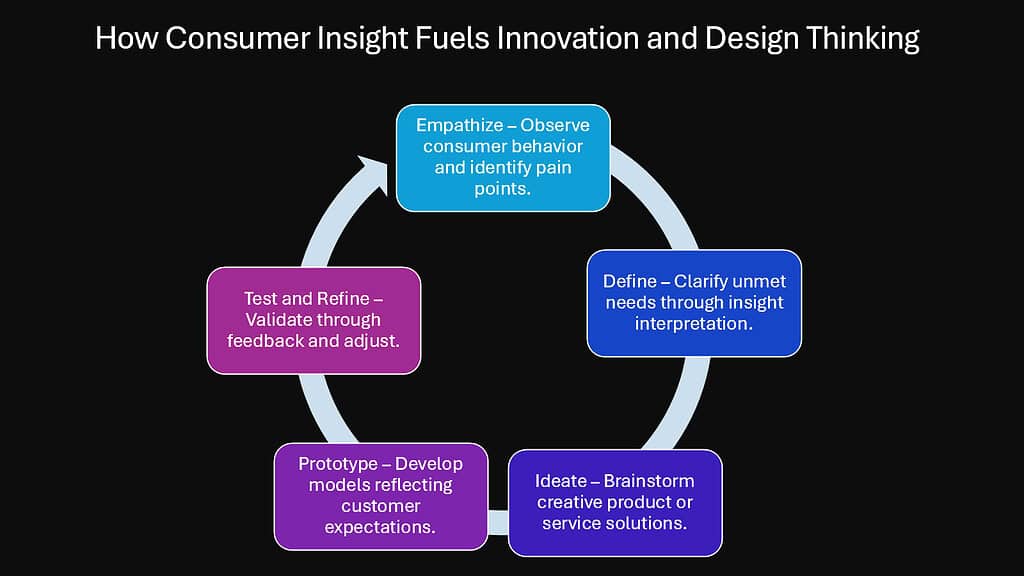
Innovation without insight produces solutions searching for problems. The business landscape is littered with technically impressive products that failed because they didn’t address actual consumer needs or behaviors. Successful innovation starts with understanding how people live, what frustrates them, where existing solutions fall short, and what they wish existed but can’t articulate.
Netflix disrupted entertainment not through technology alone but through insight into viewing behavior. Traditional television forced consumers to adapt their schedules to programming. Netflix recognized that people wanted control over their viewing experience, freedom from commercial interruptions, and the ability to consume content at their own pace. This insight drove every product decision, from the streaming model to algorithm-driven recommendations.
Dyson’s bagless vacuum cleaner emerged from founder James Dyson’s frustration with diminishing suction in traditional vacuums. But the product succeeded because Consumer Insights validated that this frustration was widespread and that consumers would pay premium prices for a solution. Further insights revealed that consumers valued seeing the dirt they collected, which influenced the transparent bin design.
The innovation process at leading companies now starts with ethnographic research and behavioral observation rather than focus groups asking what people want. Consumers often can’t articulate needs for products that don’t yet exist. Consumer Insights teams observe pain points, workarounds, and moments of friction in daily life. Procter and Gamble’s Swiffer line emerged from watching people clean their homes and noticing how cumbersome traditional mops were. The insight wasn’t that people wanted a new cleaning tool; it was that they viewed mopping as a dreaded chore involving heavy buckets and dirty water.
Table 3: Consumer Insights Driving Product Innovation
| Company | Consumer Insight Discovered | Innovation Response |
|---|---|---|
| Netflix | Viewers want control over when and how they watch content | On-demand streaming with no commercials |
| Dyson | Loss of vacuum suction frustrates users repeatedly | Bagless cyclonic technology maintaining constant suction |
| Airbnb | Travelers seek authentic local experiences over standardized hotels | Platform connecting homeowners with travelers |
| Spotify | Music listeners want easy access without ownership burden | Streaming service with personalized playlists |
| Peloton | Gym-goers want instructor-led classes without travel hassle | Connected fitness equipment with live streaming |
3. Consumer Insights and the Strategy Behind Market Positioning
Market positioning determines competitive success, yet many companies position themselves based on internal capabilities rather than external perception. The most effective positioning strategies emerge from Consumer Insights that reveal how target audiences think about categories, what trade-offs they’re willing to make, and which benefits resonate most deeply. Michael Porter’s generic strategies framework offers a lens for understanding how insights translate into positioning choices.
Porter identified three fundamental competitive strategies: cost leadership, differentiation, and focus. Consumer Insights determines which strategy fits a brand’s target audience and how to execute it authentically. IKEA exemplifies insight-driven cost leadership. The company recognized that young adults and budget-conscious families valued design and style but couldn’t afford traditional furniture prices. The insight went deeper: these consumers were willing to assemble furniture themselves if it meant significant savings.
Tesla chose differentiation through Consumer Insights, revealing that environmentally conscious consumers with disposable income felt conflicted about luxury cars’ environmental impact. Electric vehicles existed but carried associations with compromise and limited performance. Tesla’s insight was that their target audience would embrace electric if it meant no sacrifice in status, performance, or design. The company positioned electric vehicles as superior rather than alternative.
Dollar Shave Club didn’t compete with Gillette on blade technology. Insights revealed that men found razor shopping expensive, confusing, and inconvenient. By positioning around convenience and value with irreverent branding, Dollar Shave Club carved out space in a mature category, eventually selling to Unilever for one billion dollars.
Table 4: Porter’s Strategies Through Consumer Insights
| Competitive Strategy | Brand Application | Positioning Outcome |
|---|---|---|
| Cost Leadership | IKEA | Affordable design for budget-conscious consumers |
| Cost Leadership | Walmart | Everyday low prices as primary benefit |
| Differentiation | Tesla | Electric vehicles as performance leaders |
| Differentiation | Louis Vuitton | Luxury through heritage and exclusivity |
| Focus Strategy | Patagonia | Premium gear for conscious adventurers |
4. Consumer Insights and Cultural Relevance in Global Marketing
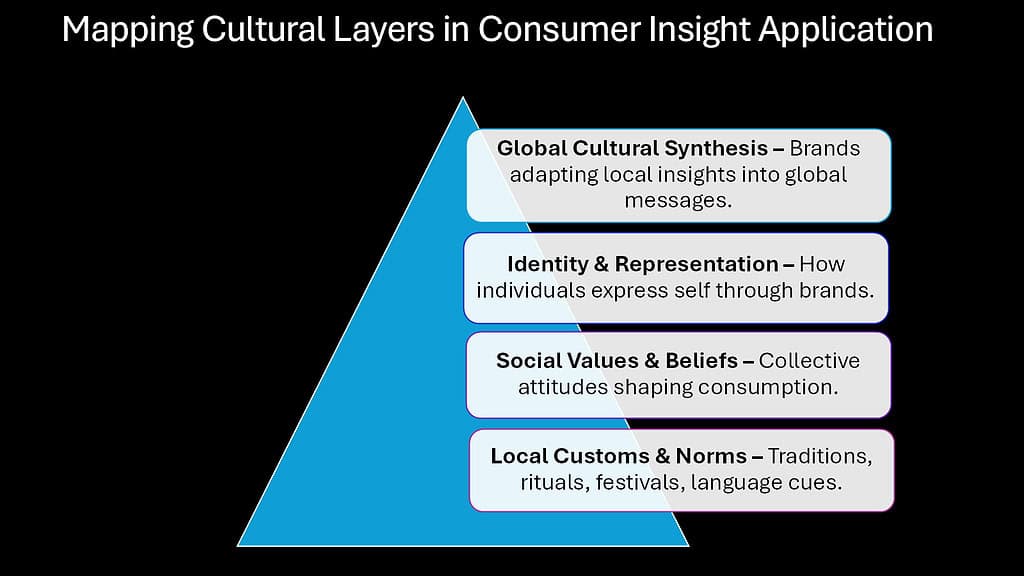
Global brands face a paradox: maintaining consistent identity while adapting to diverse cultural contexts. Consumer Insights provides the cultural intelligence necessary to navigate these complexities, revealing how values, traditions, and social norms shape brand perception across geographies.
Coca-Cola demonstrates cultural adaptation informed by Consumer Insights. The brand maintains its core identity around happiness and togetherness while tailoring expressions to local contexts. In India, campaigns incorporate Bollywood aesthetics and family-centered narratives. In China, the brand emphasizes prosperity and celebration aligning with festivals. These aren’t superficial translations but insight-driven understanding of what happiness means in different cultural frameworks.
McDonald’s menu localization stems from Consumer Insights into dietary preferences and restrictions. In India, where many consumers avoid beef for religious reasons, the chain introduced chicken and vegetarian options like the McAloo Tikki burger. In Japan, seasonal offerings incorporate local flavors like teriyaki and matcha. These adaptations work because Consumer Insights teams understand that food carries cultural meaning beyond nutrition or taste.
American brands expanding to Asia must navigate collectivist cultures where group harmony matters more than individual expression. Consumer Insights helps brands like Starbucks adapt. In China, Starbucks stores are larger with more communal seating, reflecting insights that Chinese consumers use coffee shops for social gatherings rather than solo productivity. The brand essence remains consistent while execution aligns with cultural behavior patterns.
Table 5: Cultural Consumer Insights in Global Markets
| Geographic Market | Key Cultural Insight | Brand Adaptation Example |
|---|---|---|
| India | Food choices tied to religious identity | McDonald’s vegetarian and chicken options |
| Middle East | Modesty and family values central | Fashion brands offer modest clothing lines |
| Japan | Seasonal change deeply appreciated | Seasonal limited edition products |
| China | Collective success valued over individualism | Starbucks communal seating arrangements |
| Latin America | Personal relationships prioritized | Service brands emphasize personal connection |
5. Consumer Insights and Customer Journey Optimization
The path from awareness to loyalty rarely follows a straight line. Consumers encounter brands across multiple touchpoints, devices, and contexts, forming impressions in complex, non-linear ways. Customer journey mapping, informed by Consumer Insights, reveals how people actually experience brands rather than how companies think they do.
Amazon has built its empire on insight-driven journey optimization. One-click ordering emerged from insights that checkout friction caused cart abandonment. Product recommendations leverage behavioral data showing that relevant suggestions increase purchase likelihood. Amazon Prime addressed insights about shipping costs creating purchase hesitation. Each innovation stems from understanding specific journey pain points.
The customer journey framework typically identifies four stages: awareness, consideration, purchase, and loyalty. Consumer Insights reveals what matters at each stage. Nike’s digital ecosystem demonstrates insight-driven journey design. The Nike app integrates product browsing, purchase, fitness tracking, and community features. This integration reflects Consumer Insights showing that their customers view athletic gear as part of a broader fitness identity rather than isolated purchases.
Banking illustrates journey optimization in traditionally friction-filled industries. Opening a bank account once required branch visits, paperwork, and waiting periods. Consumer Insights revealed that convenience and speed mattered more than branch interactions for many customers. Mobile-first banks like Chime emerged, offering account opening in minutes without physical locations.
Table 6: Customer Journey Optimization Through Consumer Insights
| Journey Stage | Consumer Insight | Brand Application |
|---|---|---|
| Awareness | Consumers overwhelmed by advertising | Spotify personalized discovery playlists |
| Consideration | Shoppers struggle comparing features | Apple specialists explaining products simply |
| Purchase | Checkout friction causes abandonment | Amazon one-click ordering |
| Purchase | Uncertainty about fit drives returns | Warby Parker home try-on program |
| Loyalty | Subscribers forget monthly value | Netflix personalized recommendations |
6. Consumer Insights and the Future of Predictive Marketing
The marriage of artificial intelligence and Consumer Insights promises to transform marketing from responsive to anticipatory. Machine learning algorithms process behavioral data at scales impossible for human analysts, identifying patterns and predicting future actions. Yet the most sophisticated predictive marketing still requires human insight to interpret data within cultural, emotional, and contextual frameworks.
Netflix employs predictive analytics to decide which shows to produce, using viewing data to estimate audience size for different concepts. But Consumer Insights teams interpret this data through cultural and emotional lenses. An algorithm might predict that viewers who watched one thriller would enjoy another similar show. Insights professionals understand why those thrillers resonated, whether it was the setting, the psychological tension, or the diverse casting.
Personalization represents predictive marketing’s most visible application. Spotify’s Discover Weekly playlists use algorithms to suggest new music based on listening history. The feature succeeds because it balances prediction with discovery, introducing unexpected songs alongside safe choices. This reflects Consumer Insights showing that people want some surprise rather than perfect prediction.
The future of Consumer Insights lies in augmenting human intuition with machine capabilities. Algorithms excel at processing volume and identifying correlations. Humans excel at understanding causation, context, and meaning. As privacy regulations limit data collection, the competitive advantage may shift from who has the most data to who understands people most deeply.
Table 7: Predictive Marketing Enhanced by Consumer Insights
| Predictive Tool | Consumer Insight Enhancement |
|---|---|
| Recommendation Engines | Understand why products cluster together emotionally |
| Churn Prediction Models | Reveal underlying dissatisfaction causes |
| Dynamic Pricing | Understand perceived value and fairness thresholds |
| Sentiment Analysis | Interpret cultural context of opinions |
| Content Personalization | Ensure personalization feels helpful not creepy |
Conclusion: The Enduring Power of Consumer Insights in Building Timeless Brands
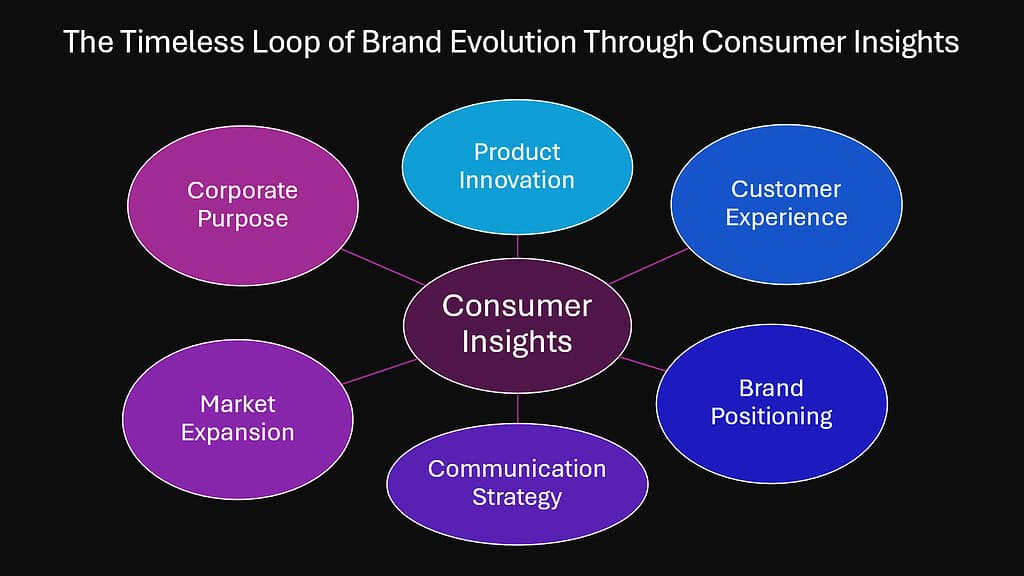
The brands that endure across generations share an uncommon trait. They listen when others talk, watch when others assume, and adapt when others cling to past success. This capacity for sustained attention to human behavior, formalized through Consumer Insights, separates iconic companies from those that fade as markets shift and preferences evolve.
The six powerful Consumer Insights explored here represent different dimensions of this central discipline. Emotional branding connects products to deeper human needs. Product innovation translates observed pain points into solutions that feel personally designed. Strategic positioning uses insight about audience priorities to carve unique market space. Cultural adaptation prevents tone-deaf marketing while building authentic local relevance. Journey optimization removes friction at moments that matter most. Predictive marketing combines algorithmic power with human understanding to anticipate rather than just react.
As technology reshapes business at accelerating pace, some observers suggest that data and algorithms will replace human insight. This perspective misunderstands both technology’s capabilities and business’s fundamental nature. Algorithms process information brilliantly but struggle with meaning, context, and the cultural codes that shape behavior. A machine can predict that someone will buy a product but not explain why that purchase matters to their identity or aspirations.
True Consumer Insights transforms organizations from the inside. It challenges assumptions about who customers are and what they want. It pushes companies beyond demographic stereotypes toward authentic understanding. The best insight work makes businesses uncomfortable because it reveals gaps between what companies believe and what consumers experience. This discomfort drives improvement. Companies that remember this truth and pursue it rigorously will always lead, because they’ll always understand what matters most: the people they exist to serve.
Table 8: Consumer Insights Maturity Levels
| Organization Type | Strategic Integration | Business Impact |
|---|---|---|
| Insight-Driven Leaders | Insights inform every major decision | Sustained competitive advantage |
| Strategic Adopters | Insights shape marketing and product strategy | Strong market position and anticipation |
| Tactical Users | Insights support campaign development | Improved marketing effectiveness |
| Data Collectors | Analytics track performance without interpretation | Operational efficiency without differentiation |


